by Richard Freeland
C. S. Lewis
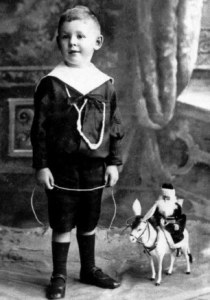
C. S. (Clive Staples) Lewis was born in 1898, Belfast, Ireland, and raised in a home his family called “Little Lea” with his parents and brother. His first decade of life was filled with loss, including the death of his mother on his father’s birthday in 1908, and the deaths of his uncle and grandfather following the same year. Lewis attended boarding school, but left after respiratory (breathing) troubles and attended a prep school (high school) in Malvern- a city known as a health resort. Lewis reportedly discarded his childhood Christian faith during his time at Malvern.
After studying at Malvern College, Lewis’ life took a series of quick turns- first to various cities for private studies, then to Oxford, and finally to the war. Lewis enlisted in the British Army to serve in World War I, arriving at the frontlines in France on his birthday, 1917. Wounded, both physically from the Battle of Arras and emotionally from the death of companion Paddy More, Lewis then returned to Oxford to finish out his studies. There, his collection of war poems “Death in Battle” earned him his first publication.
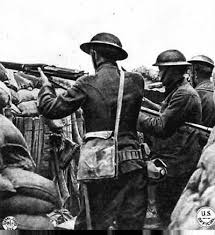
Lewis, after winning a small writing award and substitute teaching, eventually became a fellow (professor) at Magdalen College of Oxford, teaching English there for twenty-nine years afterwards. While at Magdalen, Lewis met J.R.R. Tolkien, author of The Silmarillion, The Hobbit and The Lord of the Rings, who influenced Lewis immensely. The literary giants met at an Oxford faculty meeting- Lewis had become an Oxford professor only a year before, and Tolkien held the Anglo-Saxon chair. Initially, Lewis viewed Tolkien ambivalently, writing in his diary “No harm in him; only needs a smack or so.” Briefly brushing with theism (belief in God) in the years prior, Lewis embraced Christianity after a long discussion with Tolkien and friend Hugo Dyson. These three would form the core of “The Inklings,” a group of literature lovers who would meet in Lewis’ offices on Thursday nights.
During World War II, Lewis published The Screwtape Letters in weekly newspaper installments and gave the lectures that would become his intellectual opus (achievement) The Abolition of Man, both works focusing on morality. In 1944, Lewis gave the weekly radio talks later published as his book Mere Christianity, a defense and exploration of Christianity.
In 1950, Lewis published The Lion, the Witch and the Wardrobe, the first of the seven books he would write about Narnia. Thirty years prior to its publishing, at the age of sixteen, Lewis was struck by a vision of a Faun (mythical man with goat legs) wielding an umbrella on a snowy landscape. Over a quarter of a century later, Lewis, still intrigued by the unorthodox image, attempted to write a story about the striking image. Next, a sled-riding female monarch (ruler) popped into his mind. And finally, Aslan. “Aslan came bounding into it… Once He was there He pulled the whole story together, and soon He pulled the six other Narnian stories in after him,” Lewis said later.
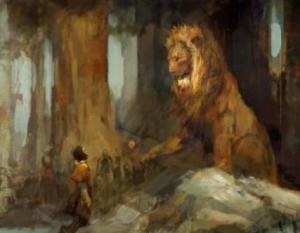
The foundation for The Lion, the Witch and the Wardrobe was his love of fairy tales, of which he wrote: “Sometimes, fairy stories may say best what’s to be said.” Lewis’ nurse, Lizzie Endicott, told him many tales of Irish mythology, including one about the pots of gold found at the end of rainbows. Lewis’ love for this particular story led him to one day, upon seeing a rainbow, declare the end of it to be in his front yard, and convince his brother to help him dig for gold. Come nightfall, his father, returning from work, determined there was indeed no gold at the bottom of the hole after falling in.
Lewis and his brother began designing a fictional world called ‘Animal- Land.’ In Animal-Land, armored mice battled nefarious cats, perhaps an inspiration for the Narnian character of Reepicheep. These early writings and imaginings, oddly enough, lightly resembled light political and economic issues, like Irish independence. “Do we mind work? No! But we mind tyranny!!” a character from Lewis’ story about a railway strike exclaims. Lewis told these and other stories, however, as fervently as he would one day lecture in the future, although then from a curious stage- the back of a tall, dark wardrobe.
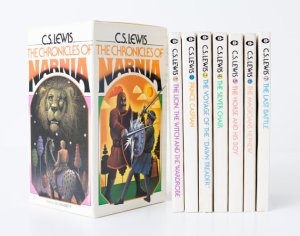
Another inspiration for the Narnia tales visited Lewis physically in the form of four World War II evacuees. Fleeing the 1939 bombings, the four children lived with Lewis, his brother and their long time family friends, more children accompanying them over time. Lewis enjoyed having the children in his home, but marked their difficulty in entertaining themselves. To spark their imagination, Lewis wrote them a story he would return to ten years later with The Lion, the Witch and the Wardrobe, containing the following passage:
“They all had to go away from London suddenly because of Air Raids, and because Father, who was in the army, had gone off to war and Mother was doing some kind of war work. They were sent to stay with a kind of relation of Mother’s who was a very old professor who lived all by himself in the country.”
C. S. Lewis published the next six installments of his Narnia tales over the next decade. Another story, however, seized his attention- a love story. Joy Davidman was an American Marxist who, in part from reading Lewis’ writings, converted to Christianity, and began writing letters to Lewis. Eventually Davidman and her two boys moved to England. Although initially friends, the two grew closer, and married in a civil ceremony in early 1956 to ensure Davidman’s citizenship.
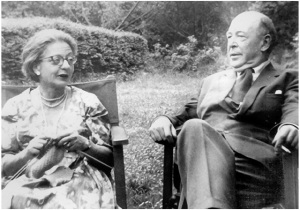
In late 1956, Davidman discovered she had cancer. After a slight improvement in her condition, Davidman and Lewis continued in their lives, growing more and more in love. Lewis’ brother described the marriage as lending Tolkien “a whole dimension to his nature that had previously been starved and thwarted.” Lewis and Davidman soon took a romantic trip to Greece, a place they both fantasized about visiting.
“I never expected to have, in my sixties, the happiness that passed me by in my twenties,” Tolkien said of that time to Neville Coghill, an Inkling.
Joy Davidman died in 1960. Lewis found recovering from the loss extremely difficult. His brother’s alcoholism made his final years even more of a trial. Warren Lewis returned to live with his brother in a sober state for what would be Lewis’ last few weeks, however. The day President John F. Kennedy and writer Aldous Huxley died, November 22, 1963, Lewis too passed through the wardrobe no ‘son of adam’ has yet returned from.
Joseph Robinette

Joseph Robinette was born in the city of Rockford, Tennessee, and raised in the city of Jasper. Disappointed by his son’s withdrawn nature, Robinette’s father, runner of a local dry goods store, encouraged Robinette to appear on the stage. “At the audition, my interest in theater was piqued. I learned to talk loud enough that the audience can hear you, and clear enough they can understand you,” Robinette told the South Jersey Times in 2011. Robinette tried out for a part, although it wasn’t an average school or community production- the 1950 production “On Borrowed Time” was his goal. Acting beside him in the high-scale Atlanta play would be Boris Karloff, the film master of horror who played Frankenstein in the original movie. Robinette got the part, and his theater career began.
After performing in a few high school productions and winning senior class president (of his graduating class of forty-one students), Robinette enrolled in Carson-Newman Tennessee College, pursuing his passion with a Speech and Drama major, and then studied a graduate degree at the University of Tennessee. During his final period of schooling at Southern Illinois University, Robinette met Helen Marie Seitz, who he would marry in 1965. Throughout his college years Robinette performed in seventeen plays, culminating with a minor role in the 1963 film “The Fool Killer.” On the set of “The Fool Killer,” Robinette studied another horror idol- Tony Perkins of Psycho fame.
Joseph Robinette has since had a part in nearly sixty theatrical productions- today he holds professor emeritus (retired professor) status at Rowan College, where he wrote forty-eight of his published plays and musicals. Most notably, Robinette has written the stage adaptations of both E.B. White’s Charlotte’s Web, on which he worked with E.B. White himself, and in recent years the movie “A Christmas Story”. Robinette adapted C.S. Lewis’ The Lion, the Witch and the Wardrobe for the stage in 1989.
Works Cited and Referenced:
“2013 Distinguished Alumnus Joseph Robinette.” YouTube. N.p., n.d. Web. 28 Apr. 2015.
Ditchfield, Christin. “Inspiration, Imagination and Adventure.” CBN.com. N.p., n.d. Web. 28 Apr. 2015.
Duriez, Collin. “The Life of C.S. Lewis.” A Field Guide to Narnia. Stroud: InterVarsity Press, 2004. 240. Web. 28 Apr. 2015.
“The Life of C.S. Lewis Timeline.” C.S. Lewis Foundation. N.p., n.d. Web. 28 Apr. 2015.
Schryock, Bob. “Former Rowan Prof Writing Script for Musical Version of Film, ‘A Christmas Story’ | NJ.com.” NJ.com. N.p., n.d. Web. 28 Apr. 2015.
Photo Links:
https://dfisher2014dotcom.wordpress.com/
http://cslewisjrrtolkien.classicalautographs.com/inklings/index.html
http://pjustin.com/2012/02/24/what-is-real-9-aslan-is-real/
https://www.etsy.com/listing/78927263/vintage-1970-chronicles-of-narnia-series
http://www.christianitytoday.com/ct/2013/october-web-only/cs-lewis-joy-in-marriage.html
http://www.nj.com/gloucester-county/index.ssf/2012/11/retired_rowan_professer_pens_b.html